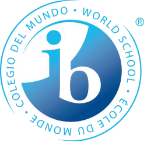Low-Incidence Cluster
McPherson IB World School hosts a well-established and student-centered low incident cluster classroom program, making it a prominent institution in the city of Chicago. This program caters to children with diverse disabilities, including autism spectrum disorder, Down syndrome, intellectual disabilities, and cerebral palsy. The school features four low incident classrooms, distributed across primary, intermediate, and upper grade levels, each accommodating 13 students. The district places children in these classrooms, supplemented by two program paraprofessionals per class, with additional support for those requiring dedicated assistance.
Children enrolled in this program benefit from an array of services, including speech and language support, occupational therapy, physical therapy, vision and hearing services, and social work. These comprehensive services aim to provide wrap-around support, ensuring the success of each child. Individualized instruction, based on their Individualized Education Program (IEP), is facilitated through teacher-modified curriculum aligned with general education standards. The program not only focuses on academic development but also offers a life skills classroom where children learn practical skills such as preparing a shopping list, using kitchen items, cooking, sorting laundry, playing games, and maintaining a tidy environment. This life skills curriculum is designed to cultivate essential skills for ongoing development and independence.
The modified curriculum for low incident program students is based on the general education curriculum, broken down into incremental steps. Utilizing resources like the Unique curriculum, Readtopia, and teacher-modified materials, students are provided with visual aids to support learning and language development. The TEACCH program is incorporated, offering a 3-drawer worksystem to guide independent task completion, leading to a reward upon accomplishing all three tasks.
Furthermore, students actively engage with their general education peers whenever possible. They participate in various activities such as gym, music, Spanish, design, and art as well as field trips and assemblies, fostering interaction with same-age peers. Some students even take part in the annual musical and various after-school programs, creating an inclusive and enriching educational environment.

